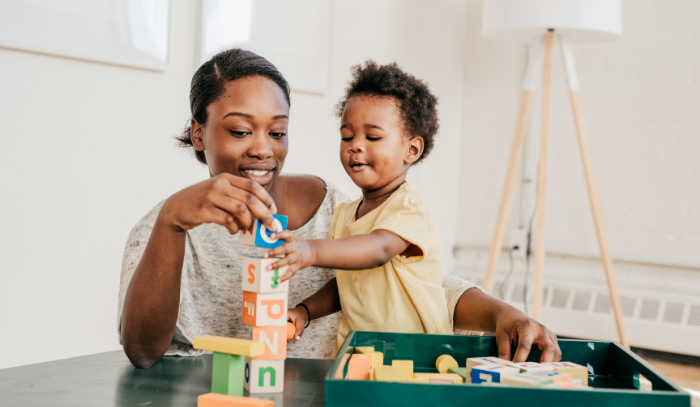Early childhood education is undergoing somewhat of a rapid change and growth. Over the past few decades, educators and parents alike have come to realize and value the importance of education from a young age. Beyond even that though, trends in early education are constantly evolving.
Today, many parents and educators are split about the importance of a highly structured academic environment from an early age versus a play-based model of teaching. Though there are certainly benefits to each model of education, determining the best ultimately comes down to the child and what style helps them with their development the most. For example, some children will thrive in a more structured environment while others will need more focus on social-emotional development.
Regardless of the teaching model — academic or play-based — many educators strive to stay up on trends in teaching. These adaptations can shake up classrooms and reach more students in more productive ways. Here are some of the big ideas taking hold.
Hands-On Nature
It is nearly ingrained in all of us that education happens in the classroom. But some educators are turning that idea on its head, especially at the early education level. Today, many preschools and other types of early education programs are promoting things like “nature schools” and “outdoor classrooms” that supplement or even replace the indoor setting.
The idea behind these outdoor programs is rooted in studies that have shown children who spend more time outdoors develop more self-awareness, better cognitive skills, and improved mental health. The programs recognize that academics can be built into an adventure that benefits the whole student and keeps them engaged. Many reject the idea that learning needs to take place in a classroom at all — when did we decide that was the only way to do education, anyway?
Outdoor schools are also giving educators opportunities to experiment with hands-on activities. There is plenty of evidence out there suggesting that when children can feel, touch, and physically explore the things they are learning about, they retain more. What better way than to learn numbers by adding the right amounts of ingredients to a mud pie, learning about fish by catching them, or spending a quiet moment writing in a nature journal?
Nano learning
Outdoor learning can be a great way to help young children explore interests and build numerous soft skills that will help them be successful people later in life. However, many of these classrooms are also competing with technologies that are completely changing the way all people intake and process information. For instance, most experts agree that our ability to focus on one task has diminished due to the numerous distractions that tech has brought into our lives.
To get around this, some educators are trying a new technique called nanolearning. A nanolearning teaching style acknowledges that attention spans are limited, and seeks to make the most out of short bursts of educational output. The idea is to give students small, bite-sized bits of learning in 2-5 minute increments whether that be a quick learning activity, a video/podcast that shares information, or something else.
For example, students could participate in a quick improv exercise that helps them learn to express emotions and read emotions that others around them are exhibiting. This idea also incorporates forms of hands-on and collaborative learning as well. Students are actively engaged in the activity and they are working together to solve the problem of figuring out what is being improved for them.
The Achievement Gap
This gap has existed as long as formal education has. It exists between and among various ethnic and socioeconomic groups for a variety of reasons. Growing trends in education are trying to close the gap via several methods. One such method has been around since 2015, when former President Obama signed the Every Child Succeeds Act. This act, the predecessor to No Child Left Behind, gives more control over goals and performance to individual states rather than putting it into the hands of the federal government. Theoretically, this allows states to manage their individual gaps.
Universal preschool plans are becoming part of the solution to the achievement gap in early education. President Biden is calling for states and the federal government to partner with each other to offer free preschool to all students in order to bridge the gap. As long as the program scales in both size and equity, it should close the gap.
Early childhood education is changing at a rapid rate and keeping up with all of the new trends can be difficult. Today, many educators are working towards giving students more time to learn and explore outside. Some are also focusing on teaching students in bite-sized chunks that can help adapt to short attention spans.







